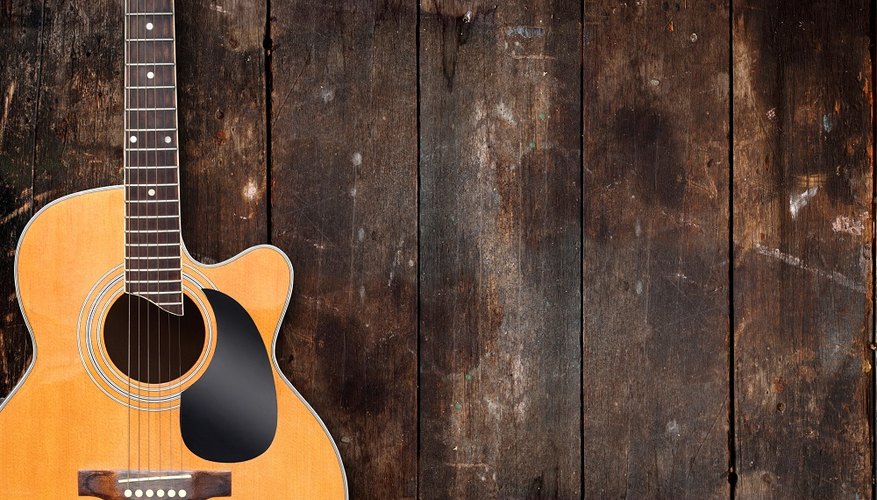If you have an acoustic-electric guitar that produces a lot of feedback when plugged into an amplifier, then you may want to consider using a soundhole cover to help reduce the noise. Whether you have a guitar with a piezo pickup, an internal mic or another type of acoustic-electric set-up, a soundhole cover will work for you. With a little bit of time and patience, you can make your own soundhole cover.
Use a ruler to measure the diameter of the soundhole. Divide this measurement by two to find the radius.
Use the compass to draw a circle on the cardboard with a radius 3 mm (1/8 inch) larger than the soundhole.
- If you have an acoustic-electric guitar that produces a lot of feedback when plugged into an amplifier, then you may want to consider using a soundhole cover to help reduce the noise.
- Use the compass to draw a circle on the cardboard with a radius 3 mm (1/8 inch) larger than the soundhole.
Cut out the circle from the cardboard carefully. Most soundholes are circular; however, you may have to slightly adjust the shape of your soundhole cover to accommodate for any irregular shapes. Cut out a second cardboard circle of the same radius using the same method.
Adjust the compass and draw another circle on the cardboard that has a radius that is 3 mm (1/8 inch) smaller than the guitar soundhole cover. Cut out this circle and repeat so that you have two larger cardboard circles and two smaller ones.
Align the two smaller cardboard circles and glue them together. Glue the two larger circles on either side of the smaller cardboard circles.
Wedge the soundhole cover so that the lip you have created with the different sized circles fits around the border of the soundhole and does not fall out. You can cut the circles to make them smaller if they do not fit perfectly on your first try.
TIP
You can insert foam or another insulating material in between the two larger cardboard circles to dampen the feedback even more.
WARNING
Use caution with the scissors in order to avoid any accidental cuts.
